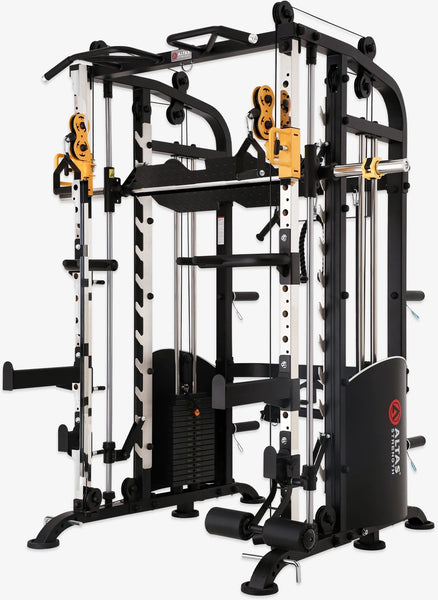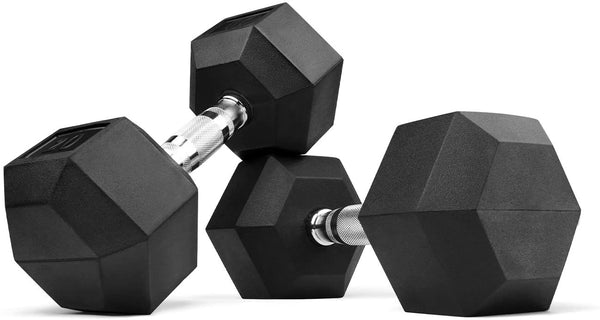Your Cart is Empty
April 02, 2024 4 min read
The chest is one of the most important muscle groups to train in the gym. It's a key area for building strength and power, as well as improving posture and balance. But understanding the anatomy of the chest is essential for effective chest training. Knowing which muscles are involved in different exercises, and how to activate them correctly, is the key to getting the best results from your workouts.
Shop The Collection: Smith MachinesThe chest is made up of two main muscle groups – the pectoralis major and the pectoralis minor. The pectoralis major is the larger of the two and is located in the front of the chest, covering the ribs and breastbone. It’s responsible for pushing movements such as bench press and push-ups. The pectoralis minor is smaller and is situated underneath the pectoralis major. It assists in shoulder elevation when you’re pushing, as well as internal rotation of the arm.
 Shop The Gear: Altas M810 All-in-One Functional Smith Trainer, $3,649.99 USD
Shop The Gear: Altas M810 All-in-One Functional Smith Trainer, $3,649.99 USD
The chest also contains a number of smaller muscles that work together to provide stability and control. These include the subscapularis, serratus anterior, and coracobrachialis. All of these muscles need to be worked in order to get a complete chest workout.
Shop The Collection: DumbbellsThere are many different types of exercises that can be used to target the chest muscles. The most popular and effective exercises for building chest size and strength include the flat bench press, incline bench press, decline bench press, push-ups, dips, and cable flyes. Each exercise targets different parts of the chest and should be included in any comprehensive chest workout routine.
 Shop The Gear: MAGMA Rubber Hex Dumbbells, from $5.99 USD
Shop The Gear: MAGMA Rubber Hex Dumbbells, from $5.99 USD
The flat bench press is one of the most common exercises for developing the chest. This exercise primarily targets the pectoralis major and works to develop chest size and strength. To perform a flat bench press correctly, lie down on a flat bench with your feet flat on the floor. Grasp the barbell with an overhand grip, slightly wider than shoulder width apart. Keep your back flat and core tight, then lower the barbell to your chest and press it back up until your arms are straight again.
The incline bench press is similar to the flat bench press, but it targets the upper portion of the pectoralis major. To perform this exercise, set an adjustable bench to an incline angle (45° is recommended) and follow the same steps as the flat bench press. You may need to use lighter weights due to the increased angle of the bench.
The decline bench press is the opposite of the incline bench press and targets the lower portion of the pectoralis major. To perform this exercise, set an adjustable bench to a decline angle and follow the same steps as the flat bench press. Again, you may need to use lighter weights due to the decreased angle of the bench.
Push-ups are another great exercise for targeting the chest. To perform a push-up, start in a plank position with your hands slightly wider than shoulder-width apart. Lower your body towards the ground until your chest touches the ground, then push back up until your arms are straight again. Push-ups can be modified to make them easier or harder, depending on your fitness level. For example, you can do push-ups on your knees or place your hands on an elevated surface (such as a bench) to increase the difficulty.
Dips are a great exercise for targeting the chest, shoulders, and triceps. To perform dips, start in a seated position with your hands on the edge of a bench or chair. Place your feet on the floor and lift your body up so that your arms are straight. Lower your body down until your elbows are bent at 90° and then push back up until your arms are straight again. Dips can be made easier by placing your feet on a higher surface (such as a bench).
Cable flyes are an isolation exercise that targets the inner chest. To perform this exercise, stand in between two cable machines with a handle in each hand. Keep your arms straight out in front of you and slowly pull the handles in towards your chest. Squeeze your chest muscles as you bring the handles together, then slowly release and return to the starting position.
Now that you know the anatomy of the chest and the different exercises you can use to target it, here are some tips for effectively training the chest:
Understanding the anatomy of the chest is essential for effective chest training. Knowing which muscles are involved in different exercises, and how to activate them correctly, is the key to getting the best results from your workouts. By incorporating a variety of chest exercises and focusing on proper form and technique, you can achieve maximum results from your chest workouts.
Shipping Protection gives you peace of mind while saving you time and money.
Shipping Protection provides coverage for eligible orders that are lost or damaged in transit, or stolen after delivery has been confirmed by the carrier. MAGMA Fitness, through its partners, administers the protection program and may receive compensation for these services. Coverage is subject to the terms, conditions, and exclusions outlined in our Shipping Protection Terms & Conditions.